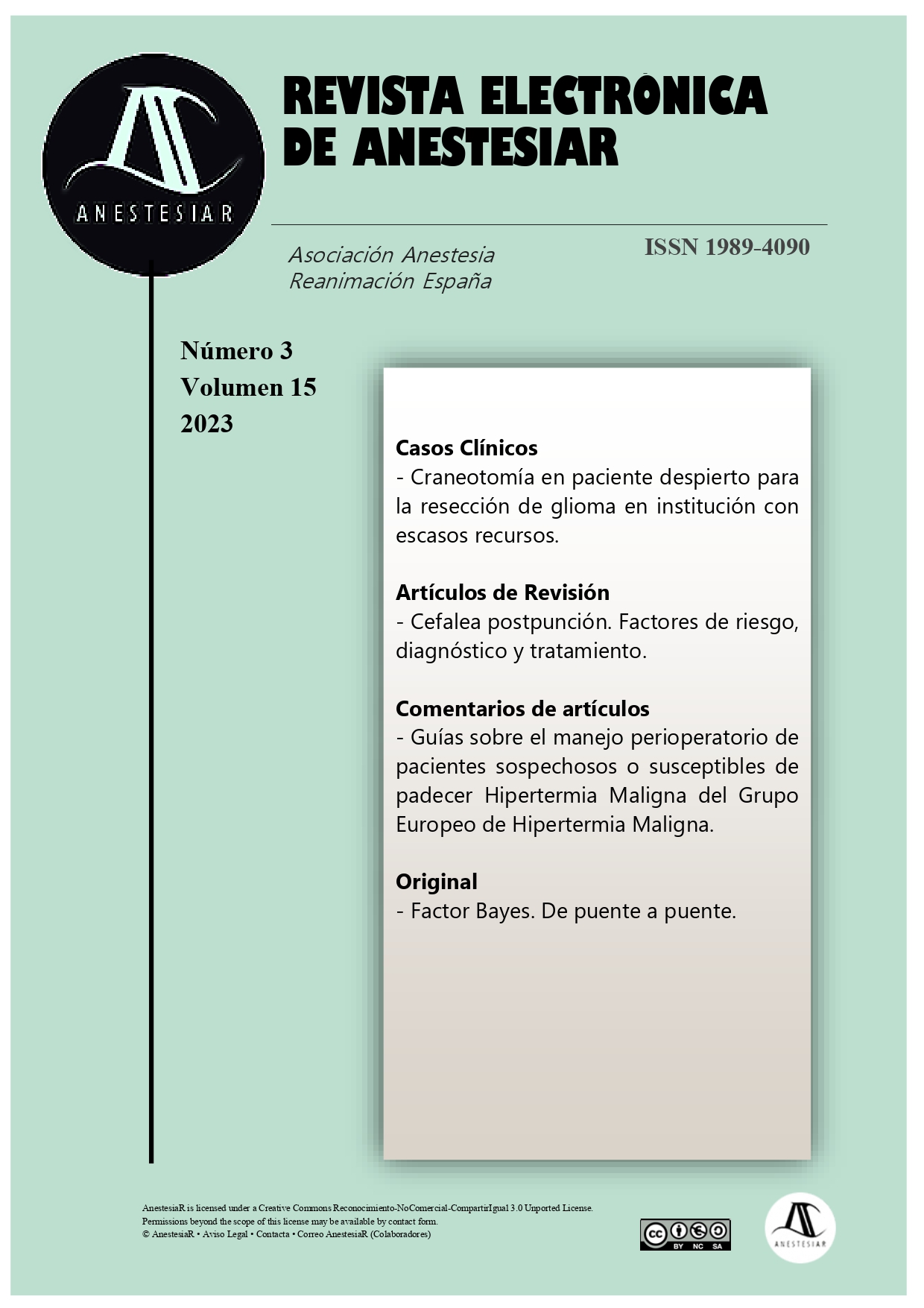Awake craniotomy for glioma resection in a resource-poor institution.
DOI:
https://doi.org/10.30445/rear.v15i3.1079Keywords:
awake craniotomy, low-grade glioma, cortical and subcortical stimulation, supraglottic deviceAbstract
Objective
The aim of this study is to present a case of intracranial surgery in a 46-year-old male patient for the removal of a low-grade glioma located in the right frontotemporo-insular region with the patient awake during the procedure. In this case the asleep-awake-awake anesthetic technique was used, securing the airway with supraglottic device.
Materials and Methods.
A review of the literature was performed in databases such as UpToDate, PubMed and ScienceDirect.
Discussion
Awake surgery, complemented with intraoperative cortical and subcortical stimulation, has been shown to improve the degree of tumor resection and decrease morbidity. However, despite its efficacy and safety, it is used in less than 22% of glioma surgeries, particularly in middle/low-income countries.
Conclusion
Awake craniectomy is a feasible procedure to perform in resource-poor countries with promising results, low incidence of complications and technical failures.
References
- McGirt J, Chaichana L, Attenello FJ, Weingart JD, Than , Burger PC, et al. Extent of surgical resection is independently associated with survival in patients with hemispheric infiltrating low-grade gliomas. Neurosurgery. 2008; 63(4): 700-7. doi: 10.1227/01.NEU.0000325729.41085.73.
- Duffau , Capelle , Denvil D, Sichez N, Gatignol , Taillandier , et al. Usefulness of intraoperative electrical subcortical mapping during surgery for low-grade gliomas located within eloquent brain regions: functional results in a consecutive series of 103 patients. 2003. 2003; 98(4): 764–778. doi: 10.3171/jns.2003.98.4.0764.
- Hervey-Jumper S, Li , Lau , Molinaro , Perry , Meng , et al. Awake craniotomy to maximize glioma resection: methods and technical nuances over a 27-year period. J Neurosurg. 2015; 123 (2): 325-39. doi: 10.3171/2014.10.JNS141520.
- Chang S, Parney , Huang , Anderson Jr , Asher , Bernstein , et al. Patterns of care for adults with newly diagnosed malignant glioma. JAMA. 2005; 293(5):557-564. doi: 10.1001/jama.293.5.557.
- Amiri , Kouhnavard , Safari. Scalp block for awake craniotomy in a patient with a frontal bone mass: a case report. Anesth Pain Med. 2012; 1(3): 187–190. doi: 10.5812/kowsar.22287523.3608
- Grabert , Klaschik , Güresir , Jakobs , Soehle , Vatter , et al. Supraglottic devices for airway management in awake craniotomy. Medicine (Baltimore). 2019; 98(40): e17473. doi: 10.1097/MD.0000000000017473
- Stevanovic , Rossaint , Veldeman , Bilotta F, Coburn. Anaesthesia Management for Awake Craniotomy: Systematic Review and Meta-Analysis. PLoS One. 2016; 11(5):e0156448. doi: 10.1371/journal.pone.0156448.
- Kulikov , Lubnin. Anesthesia for awake craniotomy. Curr Opin Anaesthesiol. 2018; 31(5):506-510. doi: 10.1097/ACO.0000000000000625.
- Foster C, Morone , Cohen-Gadol. Awake craniotomy in glioma surgery: is it necessary? J Neurosurg Sci. 2019; 63(2):162-178. doi: 10.23736/S0390-5616.18.04590-3.
- Sewell , Smith. Awake craniotomy: anesthetic considerations based on outcome evidence. Curr Opin Anaesthesiol. 2019; 32(5):546-552. doi: 10.1097/ACO.0000000000000750.
Downloads
Published
How to Cite
Issue
Section
License
Copyright (c) 2023 Revista Electrónica AnestesiaR

This work is licensed under a Creative Commons Attribution-ShareAlike 4.0 International License.
 Envío y derechos de autor
Envío y derechos de autor


 Revista Electrónica AnestesiaR by
Revista Electrónica AnestesiaR by 